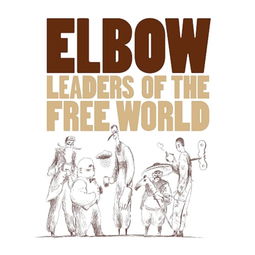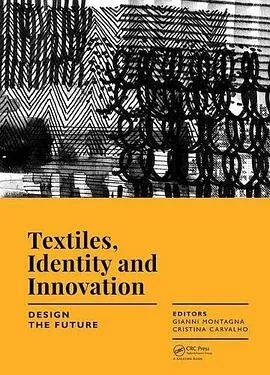Exploring the Diverse World of Smart Fiber Textiles
: Exploring the Diverse World of Smart Fiber Textiles,Abstract:,This paper explores the diverse applications and potential of smart fiber textiles, highlighting their role in enhancing comfort, functionality, and sustainability. The paper discusses the development of smart fibers, including electroactive and thermoresponsive materials, and their integration into textiles through various techniques such as weaving, knitting, and printing. The paper also explores the applications of smart fiber textiles in healthcare, sportswear, and fashion, showcasing their ability to adapt to the wearer's needs and preferences. Additionally, the paper examines the challenges faced by researchers and industry professionals in developing these technologies and suggests future directions for research and innovation. Overall, the paper highlights the exciting possibilities of smart fiber textiles and their potential to transform the way we interact with our clothing and fabrics.
Introduction: The realm of smart fiber textiles is rapidly evolving, offering a plethora of innovative solutions for our daily lives. From wearable technology to healthcare applications, these fabrics are revolutionizing how we interact with the world around us. In this article, we will delve into the various categories of smart fiber textiles and provide an overview of their unique features and applications. Let's start by exploring the different types of smart fiber textiles and their corresponding classifications.
Classification: Smart fiber textiles can be broadly categorized into three main types based on their functionality:
-
Wearable Smart Textiles: These are textiles that are worn as everyday clothing or accessories. Some examples include smart shirts that monitor heart rate, temperature, and moisture levels, while smart underwear can detect leaks and adjust its absorbency accordingly. These wearables are designed to enhance our comfort and convenience while also providing health-related insights.

-
Healthcare Smart Textiles: In healthcare, smart fiber textiles are used to monitor patients' vital signs, such as blood pressure, heart rate, and oxygen levels. They can also be used in wound care, where sensors can detect infection and guide dressing changes. These textiles are crucial in improving patient outcomes and reducing hospital readmission rates.
-
Industrial Smart Textiles: These are used in industrial settings to improve efficiency and safety. For example, smart textiles can be used to detect faults in machinery, preventing downtime and reducing maintenance costs. In addition, they can be used in manufacturing processes to monitor quality control and optimize production.
Table: Classification of Smart Fiber Textiles | Type | Description | Application | |------------|------------------------------------------------------------------------------------------------|-----------------------------------------------------------------------------------------------| | Wearable Smart Textiles | Monitor heart rate, temperature, moisture levels, and other physiological parameters. | Enhance comfort and convenience, provide health-related insights. | | Healthcare Smart Textiles | Monitor vital signs and guide wound care. | Improve patient outcomes and reduce hospital readmission rates. | | Industrial Smart Textiles | Detect machinery faults, optimize production, monitor quality control. | Prevent downtime, reduce maintenance costs, and improve efficiency. |
Case Study: One of the most innovative examples of wearable smart textiles is the Nike FuelBand. This device not only tracks heart rate and steps taken but also provides personalized coaching and motivational messages to help users achieve their fitness goals. The Nike FuelBand has become a popular tool for people who want to stay motivated and healthy, making it one of the most successful wearable smart textiles in history.
In healthcare, smart textiles have been instrumental in improving patient outcomes. For example, the Maestro system from Philips Healthcare uses wireless sensors to monitor patients' vital signs, allowing doctors to respond more quickly and effectively to any issues that arise. This system has been particularly beneficial in critical care settings, where timely intervention can mean the difference between life and death.
In the industrial sector, smart textiles have revolutionized manufacturing processes. For instance, the Honeywell Intelligent Manufacturing System (IMS) uses sensors embedded in machines to monitor performance and identify potential issues before they become major problems. This has led to significant cost savings and improved productivity, making IMS one of the most valuable investments in smart textiles.
Conclusion: Smart fiber textiles represent a fascinating intersection of technology and textile design. By incorporating advanced materials and sensors, these textiles have the potential to transform our lives in countless ways. Whether we're looking for fashionable wearables, essential healthcare monitoring devices, or industrial optimization tools, smart fiber textiles are here to stay. As the field continues to evolve, we can expect even more innovative solutions to emerge, further enhancing our ability to connect with the world around us through technology.
随着科技的飞速发展,智能纤维纺织品已成为现代纺织行业的重要发展方向,本文将围绕智能纤维纺织品的分类展开讨论,并通过案例分析进一步说明其应用与优势。
智能纤维纺织品的分类
按应用领域分类
(1)服装面料:包括运动服、户外装备、内衣等。
(2)家居装饰:床上用品、窗帘、地毯等。
(3)工业用纺织品:过滤材料、绝缘材料等。

按纤维类型分类
(1)再生纤维:如涤纶、棉麻等。
(2)合成纤维:如尼龙、聚酯等。
(3)智能复合纤维:结合了再生纤维和合成纤维的特殊性能,如抗菌、防紫外线等。
按智能化程度分类
(1)智能面料:具备传感器、控制器等智能化功能,可实现个性化定制和智能调节。
(2)智能织物材料:利用人工智能技术,实现织物材料的智能化设计和管理。
案例分析
服装面料案例
(1)某品牌运动服采用智能纤维面料,具有透气、吸湿、抗菌等功能,适合户外运动穿着。
(2)某家居品牌床上用品采用智能纤维面料,具有舒适柔软、抗菌防螨等特点,适合家居使用。
家居装饰案例
(1)某品牌窗帘采用智能复合纤维材料,具有遮光、隔音、防蚊虫等功能,适合家居装饰使用。
(2)某工业用纺织品公司采用特殊合成纤维材料,用于制造过滤材料和绝缘材料,具有高效过滤和绝缘性能。

智能纤维纺织品的优势及应用领域
优势:
(1)提高舒适度:智能纤维纺织品具备透气、吸湿、抗菌等功能,提高穿着舒适度。
(2)个性化定制:通过传感器和控制器等智能化功能,实现个性化定制和智能调节。
(3)环保可持续:采用可再生资源,符合环保可持续要求。
应用领域:
(1)服装行业:运动服、户外装备、内衣等。
(2)家居行业:床上用品、窗帘、地毯等家居装饰产品。
(3)工业领域:过滤材料、绝缘材料等工业用纺织品。
总结与展望
智能纤维纺织品的分类多样,应用领域广泛,随着科技的不断发展,智能纤维纺织品将在更多领域得到应用,如医疗保健、航空航天等领域,智能纤维纺织品的发展趋势将是更加智能化、个性化、环保可持续,随着技术的不断进步,智能纤维纺织品的性能和品质也将不断提高,为人们带来更好的使用体验。
Articles related to the knowledge points of this article:
Expand Your Career Horizons with the Advancement at Yuxian Textiles!



